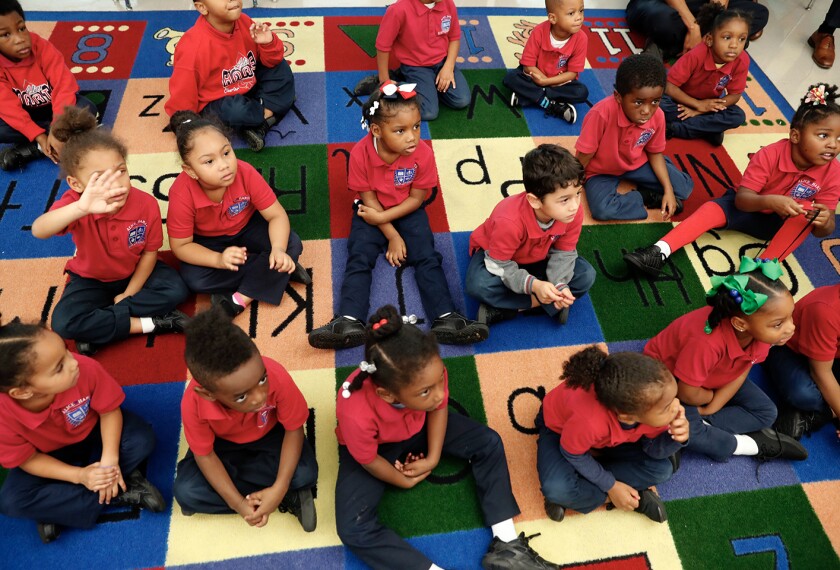When government agencies work together, they can increase the availability of child care for low-income children, but substantial problems stand in the way of improving services, a report from the General Accounting Office says.
Changes in the nation’s welfare system have “put more low-income children in care outside the home and put them in care earlier in their lives,” the congressional investigative agency finds in the study released Nov. 15.
For More Information |
| The report, “Early Childhood Programs and Services for Low-Income Families,” is available online at www.gao.gov/new.items/ he00011.pdf (requires Adobe’s Acrobat Reader). |
That demand for child care has led to a greater emphasis on collaboration, especially between subsidized child-care programs and Head Start, the federal preschool program for low-income children.
Partnerships between child-care programs and various state and federal preschool programs have produced positive outcomes, such as an increase in full-day programs, according to the report.
But the report also identifies obstacles. Some of the child- care administrators surveyed for the report said they simply didn’t have enough money to get involved in collaborative projects that would require more staff, training, and transportation.
Officials of the Department of Health and Human Services concluded that the GAO’s findings support “the need for additional investments.”
Despite large child-care spending proposals by President Clinton for the past two years, the recent budget deal the administration agreed to for fiscal 2000 does not include an increase in the Child Care and Development Block Grant. Funding for the program—the primary source of child-care subsidies for poor families— will remain at last year’s level of $1.182 billion.
“It’s very disappointing, especially since there was no significant increase last year either,” said Helen Blank, the director of the child-care and -development division at the Washington-based Children’s Defense Fund, an advocacy organization.
During fiscal 1999, which ended Sept. 30, the federal government spent about $11 billion on various child-care and early-childhood-education programs, according to the GAO report. Most of that aid is administered by HHS, but some comes from the Department of Education. Another $4 billion was spent at the state level.
In a separate move last week, Mr. Clinton announced plans for a new benefit for families that won’t affect the budget or require the approval of Congress: paid leave from work for new parents. According to the plan, contained in proposed Department of Labor regulations that are to take effect next year, states will have the option of using unemployment-insurance funds for paid parental leave.
The president’s initiative drew sharp criticism from GOP lawmakers.
“Your decision allowing states to use unemployment- compensation funds to provide paid family-leave benefits pits out-of- work Americans against their neighbors who have jobs. This is simply wrong,” Rep. Bill Archer of Texas, the chairman of the House Ways and Means Committee, and Rep. Nancy L. Johnson of Connecticut wrote in a letter to Mr. Clinton.
Under the Family and Medical Leave Act, signed into law in 1993, parents of newborn, newly adopted, or sick children can take 12 weeks of unpaid leave without losing their jobs.
Those who can’t afford to leave their jobs are left searching for child care for their infants—often the most difficult type of care to find, according to the GAO report.
While care for preschool-age children is relatively easy to obtain, shortages exist for toddlers, children with disabilities, and those who need care during evenings and weekends, the report indicates.




